Depart USA

Day 1 | Depart USA
We leave the US on an overnight flight to Greece. Dinner and breakfast will be served on board the aircraft.
Athens
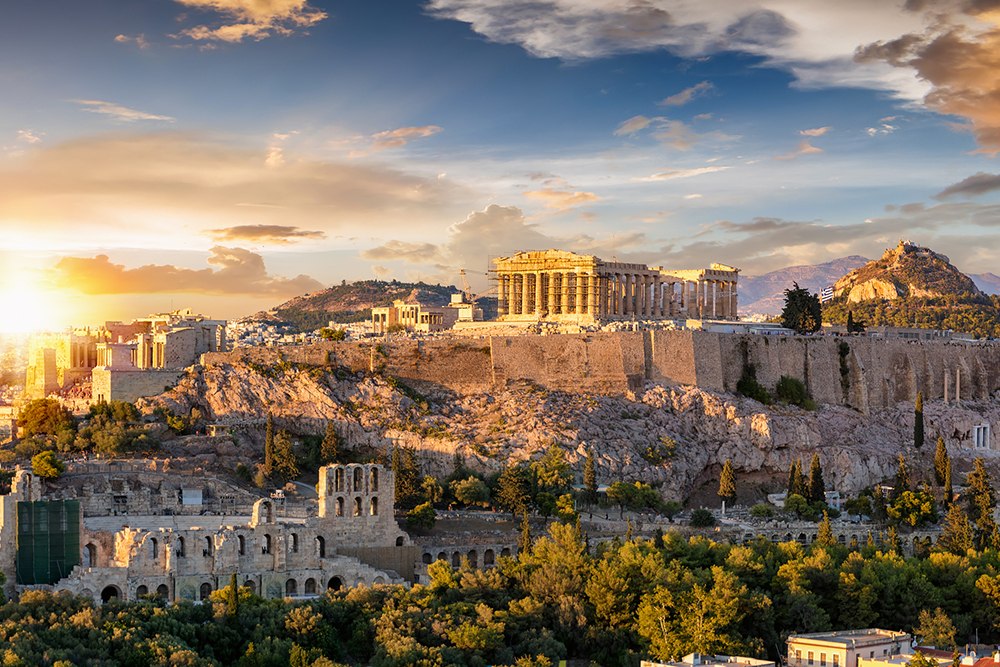
Day 2 | Athens
Upon arrival at the Athens International Airport, we meet our Faith Journeys’ Tour Manager who will assist us through the customs and baggage claim. Our exploration of Athens, the “divine city,” begins with the Acropolis, a flat-topped rocky area that rises 490 feet above sea level, where we explore the Parthenon, a temple dedicated to the Greek goddess, Athena. The Parthenon, one of the world’s greatest monuments, is considered to be the most enduring symbol and important surviving building of Ancient Greece. We will also visit the Areopagus or Areios Pagos (in Greek pagos means big piece of rock) north-west of the Acropolis, which in classical times functioned as the high court of Appeal for criminal and civil cases in Athens and from which the Apostle Paul gave his famous sermon about “The Unknown God.” From here we have an excellent view of the ancient agora; former center of the Athenian public life. We’ll enjoy seeing Syntagma Square (with the Evzones or guards in uniform guarding the Presidential Palace and the Tomb of the Unknown Solder), the Library, University and Panathenaic Stadium where the first modern-day Olympics was held, as well as the Olympieion (constructed in the 6th century BC), a colossal ruined temple that was dedicated to Zeus, king of the Olympian gods, Adrian’s Arch, and structures of the modern era. We’ll enjoy dinner and and overnight stay in Athens.
Thessaloniki

Day 3 | Thessaloniki
We journey today through northern Greece to its second largest city, Salonika, founded in about 316 BC and known in biblical times as Thessaloniki. It was in this “city whose praises are sung” where Paul preached; and as we know, wrote two of his epistles. Our panoramic tour will reveal the massive walls of Theodosius, the ancient Agora, and the Church of St. Demetrius (Hagios Demetrios) constructed on the site of an ancient Roman bath. Tonight we will enjoy dinner and an overnight stay in what has always been an important commercial seaport.
Salonika
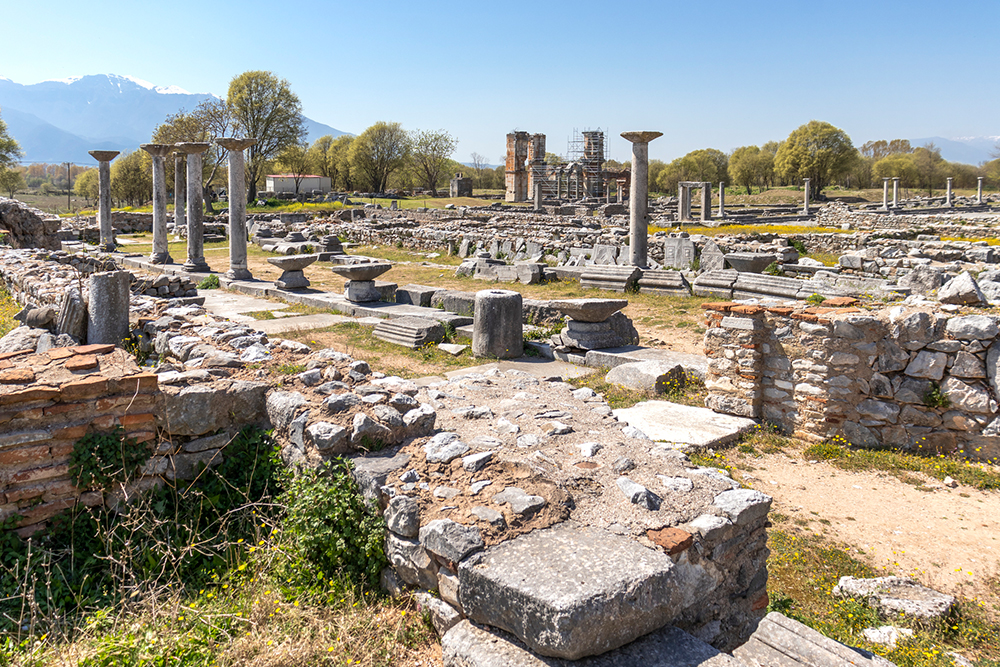
Day 4 | Kavala, Philippi & Salonika
After breakfast, we continue north to the port city of Kavala to see the remains of ancient Philippi, founded to commemorate Octavius’ victory over the assassins of Julius Caesar in 42 BC. In Philippi, Paul, accompanied by Silas, Luke and Timothy, first preached on European soil to sow the seeds of Christianity. Paul and Silas were arrested and beaten while in Philippi, but an earthquake caused their prison to be opened. It is said that when their jailer awoke, he prepared to kill himself, thinking all the prisoners had escaped and knowing that he would be severely punished, but Paul stopped him, convincing him that all the prisoners were still there. The jailer became one of the first Christians in Europe (see Acts 16: 12-40). It was also in Philippi that Paul met with a woman named Lydia, a purple-dye merchant (see Rev. 2:18-29 and Acts 16: 14-15) who became the first Christian convert. We might contemplate Paul’s unwavering dedication to his great work as we return to Salonika for dinner and another overnight stay.
Kalambaka
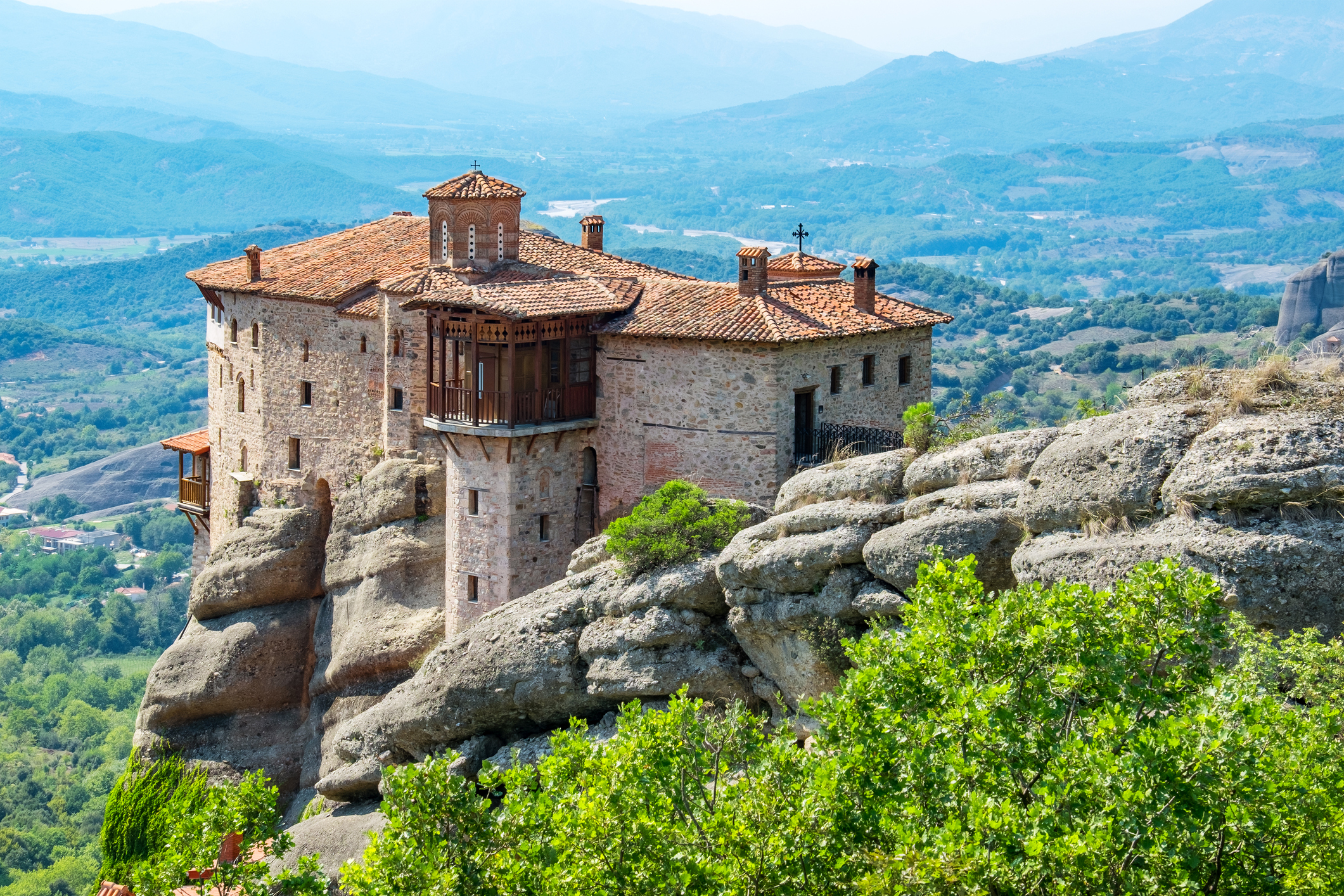
Day 5 | Salonika, Berea, Vergina & Kalambaka
Today in Salonika, we’ll see two early 4th century monuments commissioned by the Roman Emperor Galerius as part of his imperial Thessaloniki palace: the Triumphal Arch of Galerius (although less than half of the arch is preserved, it is composed of a masonry core faced with marble sculptural panels celebrating a imperial victories), and the Rotunda of the Palace (a massive circular structure with a masonry core that had an oculus like the Pantheon in Rome). We’ll also see the Castle of the Seven Towers and the Aristotelian University (founded in 1925, it is today the largest university in Greece and southeastern Europe in terms of number of staff, undergraduate and postgraduate students and facilities). We then drive to beautiful Berea where we’ll see Paul’s Bema where both he and Silas preached in AD 54 or 55 to a Jewish settlement after leaving the Thessalonians and where a Byzantine mosaic commemorates his preaching. We’ll also visit Vergina which became internationally famous in 1977, when the Greek archaeologist Manolis Andronikos unearthed what he claimed was the burial site of the kings of Macedon, including the tomb of Philip II, father of Alexander the Great. After a full and rewarding day, we’ll make our way to Kalabaka, home of the breathtaking Metéora Monasteries, for dinner and an overnight stay.
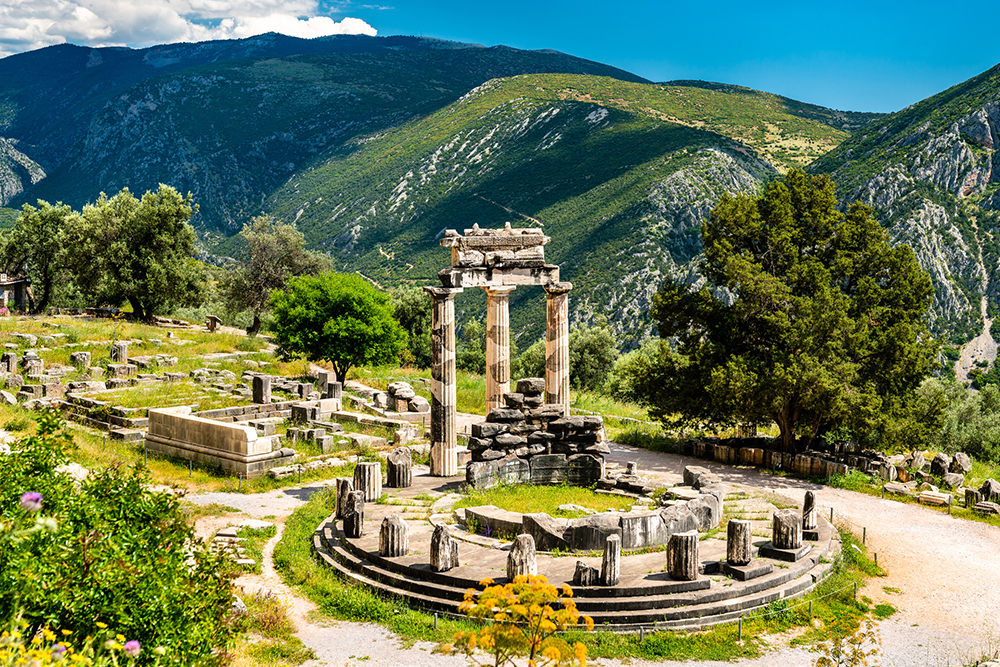
Day 6 | Kalambaka & Delphi
The Metéora, which means “suspended in the air” or “in the heavens above”, is one of the largest and most important complexes of Eastern Orthodox monasteries in Greece (which began when an ascetic group of hermit monks moved up to the ancient pinnacles as early as the 9th century). Access to the monasteries (only six remain, five of which are inhabited by men, and one by women; each monastery has fewer than 10 inhabitants) was originally and deliberately difficult, requiring either long ladders lashed together or large nets used to haul up both goods and people. Going up required quite a leap of faith! The ropes were only replaced, so the story goes, “when the Lord let them break” but eventually steps were cut into the rock. Today we’ll visit the Monasteries starting with the Meteora Monastery, then the Grand Meteoron Monastery (Transfiguration of Christ) which is built upon the highest rock and considered one of the most beautiful Byzantine monasteries. After spending the day “in the heavens above”, we’ll continue on to Delphi to enjoy dinner and an overnight stay.
Athens

Day 7 | Delphi & Athens
We awaken in a renowned city labeled the omphalos (navel) of the earth, or in other words, the center of the world! Delphi was also the site of the Delphic oracle, the most important oracle in the classical Greek world. Today, in a most beautiful and ruggedly majestic landscape, we’ll explore the ruins of the Temple of Apollo and the museum located at the foot of the main archaeological complex. The museum houses an impressive collection of items associated with ancient Delphi, including the earliest known notation of a melody, the famous Charioteer, golden treasures discovered beneath the Sacred Way, and fragments of reliefs from the Siphnian Treasury. The curving road from Delphi leads through picturesque vineyards and olive groves before taking us to the 11th century Byzantine monastery of Osios with its famous mosaics. We also pass through Thebes before arriving back in Athens, known as the cradle of western civilization, where we’ll enjoy dinner and an overnight stay.
Greek Island Cruise
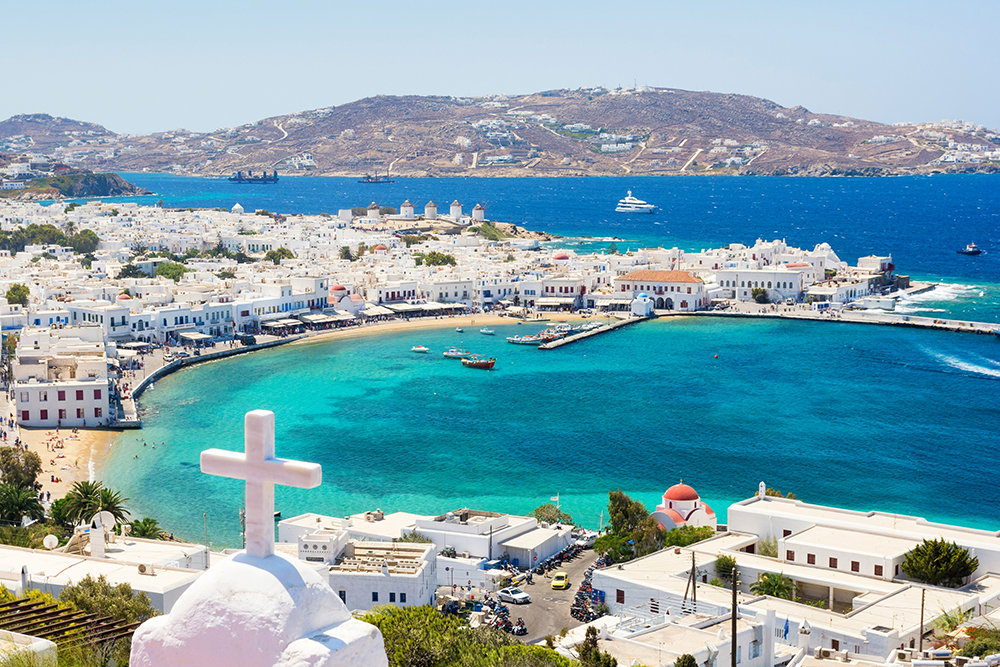
Day 8 | Mykonos
Today we transfer to the city of Piraeus which sports the largest passenger port in Europe and the third largest in the world, to embark on a lovely Greek Island cruise. We sail first to the island of Mykonos, believed to have been named after a local hero who was considered an offspring of the god Appollo. There is much to see in beautiful Mykonos, also known as Chora (i.e. the Town in Greek, a common denomination in Greece when the name of the island itself is the same as the name of the principal town), which lies on the west coast. From its legendary windmills (landmarks from as early as the 16th century), to its “Little Venice” where buildings have been constructed on the sea’s edge with their balconies overhanging the water, from its famous mascot Petros the Pelican to its inviting sandy beaches, from its quaint shops to its narrow cobbled streets, we can’t help but enjoy this cosmopolitan island. Perhaps tonight at one of the wonderful restaurants of Alefkandra, we’ll see a magnificent island sunset before returning to Mykonos Town to take the shuttle back to our ship.
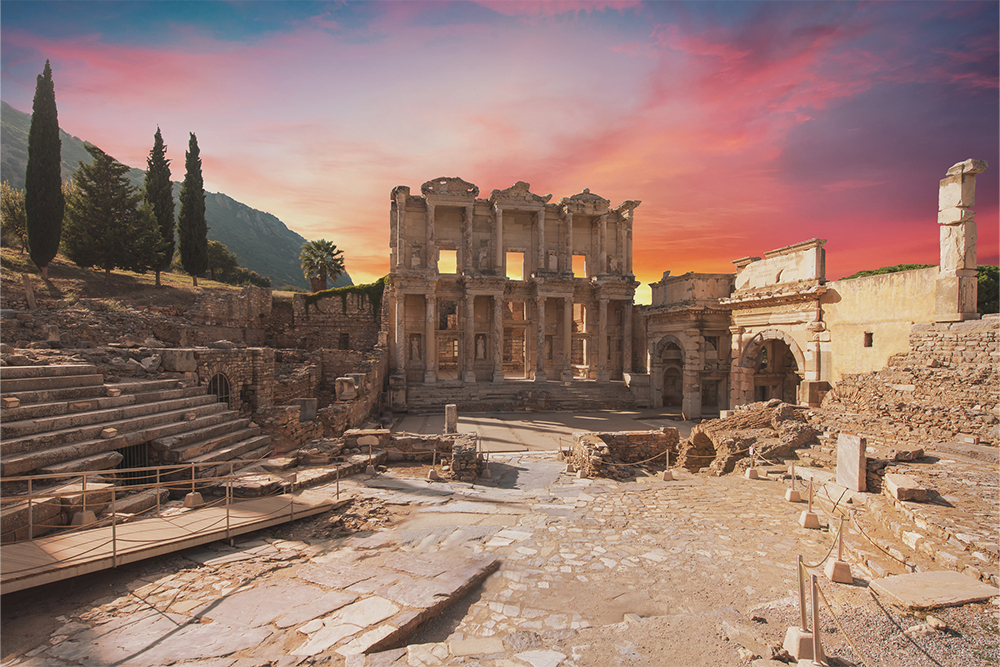
Day 9 | Kusadasi, Ephesus & Patmos
We dock in a resort town on Turkey’s Aegean coast, Kusadasi, whose name comes from words meaning “bird” and “island” because the peninsula upon which it sits has the shape of a bird’s head as seen from the sea. After driving through this picturesque town, we’ll explore the ruins of Ephesus, a city that for many years was the second largest in the Roman Empire and ranked second only to Rome. It is to the Ephesians Paul wrote: “Put on the whole armor of God, that ye may be able to stand against the wiles of the devil…. Having your loins girt about with truth, and having on the breastplate of righteousness… taking the shield of faith… the helmet of salvation, and the sword of the Spirit which is the word of God” (Ephesians 6: 11 – 17) after having spent three years (from 52-54 A.D.) walking its marble streets, preaching and ministering here. While in the ancient city of Ephesus, we’ll look with wonder on many historical sights including the Temple of Artemis (Diana), the fountain of Trajan, the Baths of Scolastika, the Temple of Hadrian, the Library of Celsus and the Great Theatre capable of holding 25,000 spectators (used initially for drama, but during later Roman times for gladiatorial combats) where Paul preached and where the riot of the silversmiths occurred. We will walk along Arcadian Way where Mark Anthony and Cleopatra once rode in procession. En route to Patmos, we’ll view the Basilica of St. John, which was built over his grave in the 6th century, and we will see the Monastery of St. John noted for its exceptional architecture, frescoes and interior decoration. Patmos was an important destination where the Apostle John received his vision of the Apocalypse. Time permitting, we may see the cave where John is said to have received his Revelation (the Cave of the Apocalypse) and visit a few of the several monasteries on the island dedicated to John, including the mile high Monastery which houses a treasury of Byzantine art and religious artifacts.
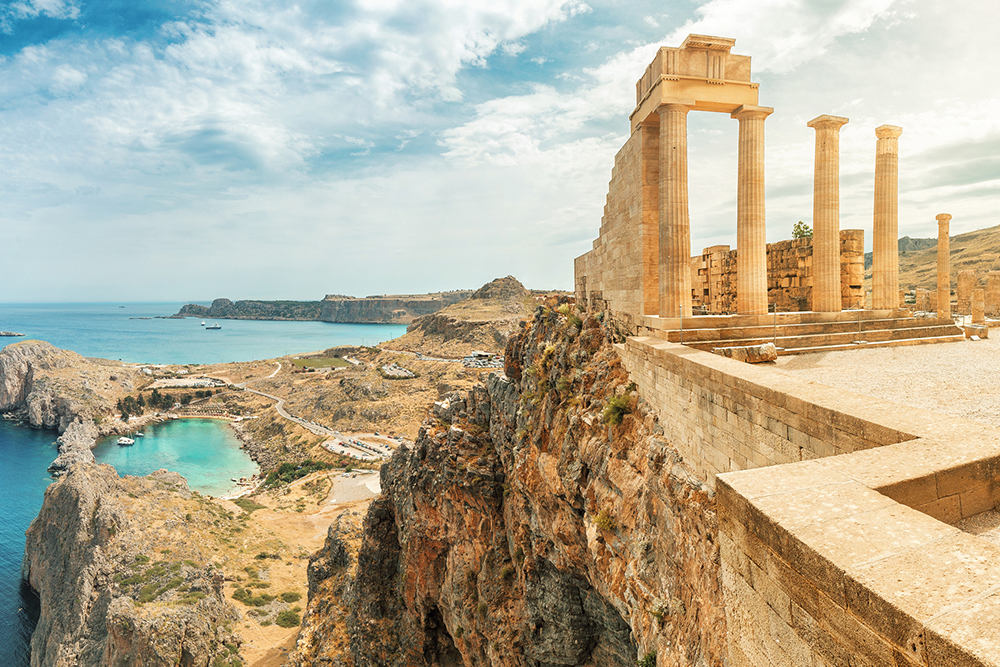
Day 10 | Rhodes
Rhodes, an island shaped like a spearhead, is famous for the Colossus of Rhodes, a giant bronze statue of the Greek god Helios which was documented as once standing over 30 meters tall at the harbor. The statue stood for only 56 years until Rhodes was hit by an earthquake in 226 BC and significant damage was done to large portions of the city, including the harbor and many buildings. The statue, one of the Seven Wonders of the Ancient World, snapped at the knees and fell over on to the land. Legend has it that Ptolemy III offered to pay for the reconstruction of the statue, but the oracle of Delphi made the Rhodians afraid that they had offended Helios, so they declined to rebuild it. Today we visit the island of Rhodes where Paul brought Christianity. We will enjoy the old town with its rich mix of Roman, Saracen, Turkish, Medieval and Italian influences and which was built by Crusader Knights of the Order of St. John. On the island we’ll also find the intriguing landscape littered with remnants of ancient settlements, the most famous being Lindos and Kameiros.
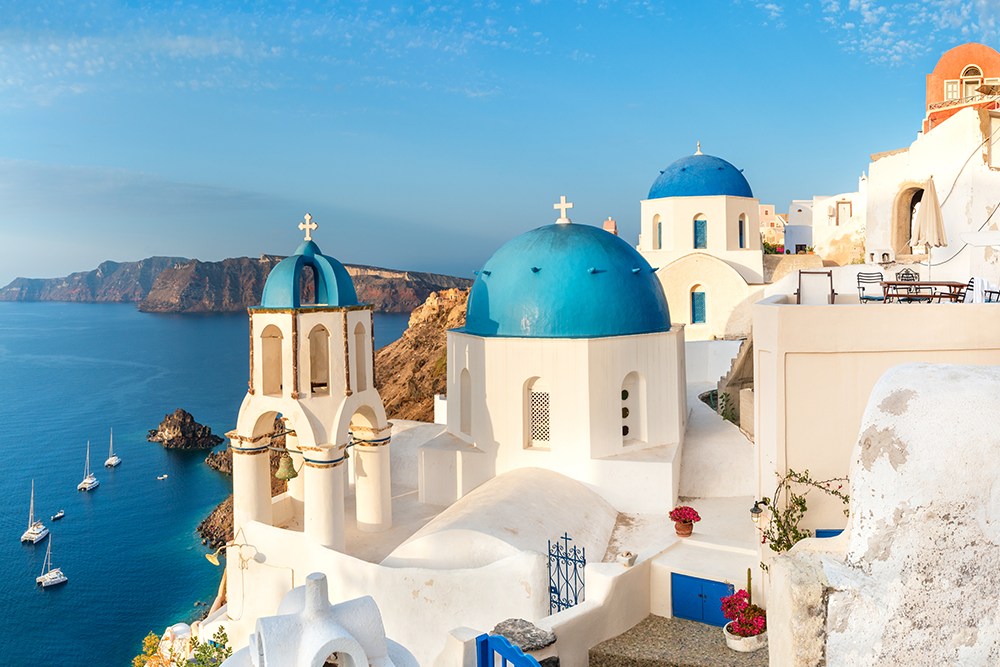
Day 11 | Crete & Santorini
Today on the last day of the cruise we will have the opportunity to visit Heraklion on the Island of Crete. It is in Heraklion where Paul met the owner and captain of the ship who warned him of continuing his journey to Rome. Optional excursions are also available to the Palace of Knossos. Knossos, which was discovered in 1899 and partially reconstructed, is believed to be the mythical Labyrinth of King Minos and the seat of ancient Minoan culture. In the afternoon we arrive at the volcanic island of Santorini where you can take the cable car (not included in the cost) up to the lovely town of Fira. Enjoy the breathtaking panoramic view! Dinner and overnight on your cruise ship.
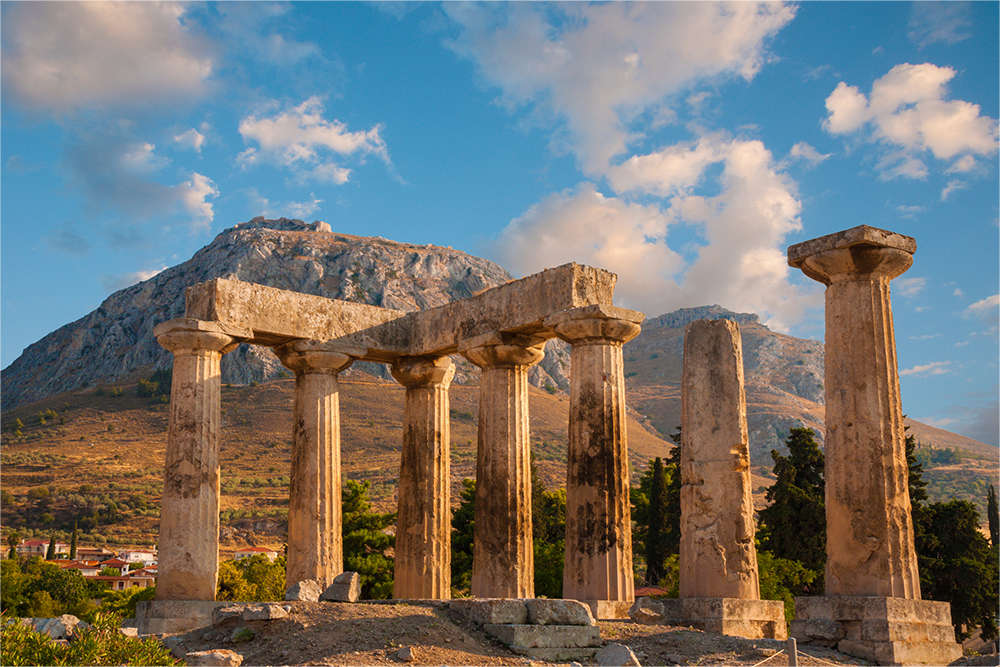
Day 12 | Corinth, Mycenae, Epidauros & Athens
After breakfast, we disembark and drive to Corinth, one of the oldest towns in Greece, which, in classical times rivaled Athens and Thebes in wealth. Paul lived in Corinth for 18 months working as a tentmaker and establishing a church (“[A]nd many of the Corinthians hearing believed, and were baptized” – The Acts 18:8). Here we will visit the Temple of Apollo (6th century BC), one of the oldest stone temples in Greece and built on a hill overlooking the remains of the Roman marketplace where Paul preached to the Corinthians. We continue on to Mycenae (the period of Greek history from about 1600 BC to about 1100 BC is called Mycenaean in reference to Mycenae), to see the ruins of the Lion’s Gate, and the Tombs of Agamemnon and Clytemnestra. Then we travel on to Epidauros, to see the sanctuary of Asclepius, one of the most celebrated healing centers of the Classical World where ill people traveled in hopes of being cured. It is said that to find out the right cure for their ailments, they spent a night in the enkoimitiria, a big sleeping hall, and listened in their dreams for the god Asclepius to advise them of what they had to do to regain their health. Even after the introduction of Christianity and the silencing of the oracles, the sanctuary at Epidauros was still known as late as the mid 5th century as a Christian healing center. The prosperity brought by the Asklepieion enabled Epidauros to construct civic monuments such as the huge theatre known for its symmetry and beauty. We will explore this open-air theatre and be amazed at its exceptional acoustics which permit an almost perfect hearing of unamplified spoken words to all 15,000 spectators regardless of seating. Finally we’ll visit the Corinthian Canal, an engineering marvel cut out of solid rock to link the two seas. We’ll enjoy a farewell dinner and our last overnight stay in Athens.
Depart for home

Day 13 | Depart for home
Today marks the end of our magnificent journey. We’ll transfer to the Athens airport for our flight back home.
